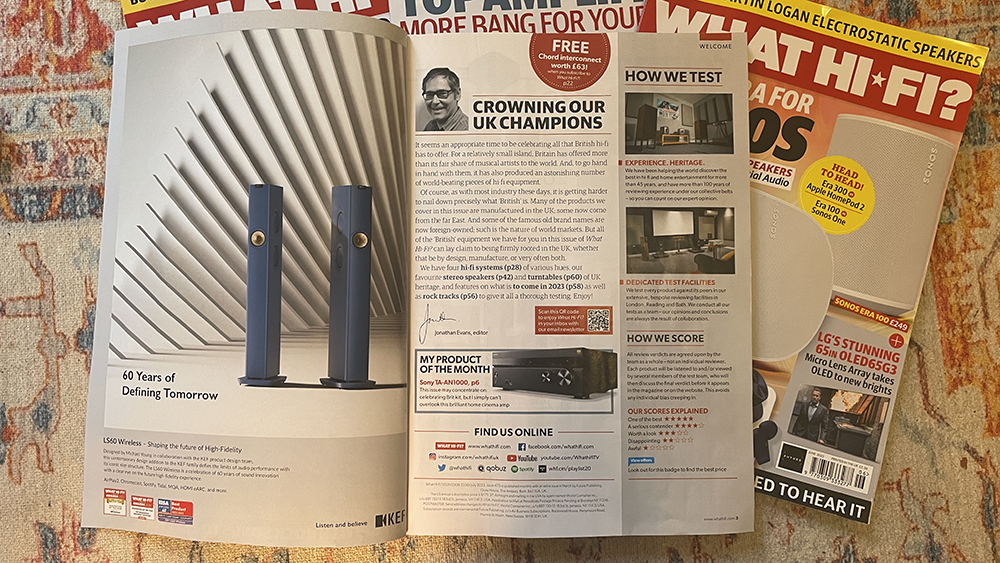What Hi-Fi? star ratings explained: the logic behind every review score
We explain the abiding star rating system that is at the forefront of every What Hi-Fi? review

What Hi-Fi? is a buying guide at its very core. We have specialised in testing hi-fi and home cinema for the best part of five decades and so have a very strong contextual knowledge with which to judge products in these fields.
Our job is to rigorously test every major product in every important sector of the audio and AV market, and come up with recommendations so that you, dear reader, can put together a sensible shortlist of products to look at when the time comes to buy. A comprehensive explanation of our reviewing process can be found in our how we test products on What Hi-Fi? article.
An important part of that reviewing process is the awarding of star ratings. Complementing every single one of What Hi-Fi?’s reviews, whether published in the monthly magazine or on whathifi.com, is a star-rating system with a scale of one (1) to five (5) stars.
As printed in every issue of the magazine, five stars mean 'one of the best at the price'; four stars represent 'a serious contender'; three stars are awarded to products that are 'worth a look'; two stars are given to 'disappointing' products; and one star is dished out to 'awful' kit (of which there are, fortunately, very few).
These ratings are judged on a value-for-money basis, with the most important criterion being performance. But let’s be clear about this: if something performs well but is badly made or a pain to use (or both), it won’t receive a high star rating. The whole package has to be right for it to get a good review and rating.
While this may seem simple enough, recent conversations with readers and a few manufacturers have made it clear to us that some of the subtleties of our star rating system aren’t quite understood. To that end, here is a brief description of what each rating means for the What Hi-Fi? team...

One star
We don’t have to dish out too many of these, thankfully. A one-star rating means that the product is irredeemably flawed and not worth buying, even if it is available at a hefty discount. In short, avoid it at all costs.
Two star
A two-star rating signifies a poor product for the price. It probably works well enough, but falls well short of the standards set by the best. This product is also likely to have significant flaws in specific areas that make us feel that it would be unlikely to appeal on a long-term basis. A two-star product is another one we think you should avoid regardless of discounts or low price.
Three star
When we award a three-star review it is because we feel the product is merely average, offering nothing special for the money. It may not be heavily flawed but still falls notably short of the attributes offered by the best at the price. Should you ever buy one? Well, yes. This is a case where we would certainly consider the product if it were available at a chunky discount, say at least a third off the full retail price. At that point, it could represent good value.
Four star
A four-star rating is good, and we feel the need to emphasise that. We know many people are put off by this rating, but they shouldn’t be, as we only award four stars to products that deserve serious consideration. That product will be very capable and good value for money. It may not be among the best all-rounders – but in many cases that won’t matter.
For example, we may stop short of awarding a product the full five-star set because it lacks a particular feature we believe to be important to many, but if that doesn’t apply to you then the omission won’t be an issue. Equally, the product could perform excellently but be priced a little too high against direct rivals that perform just as well or better. Whatever the reasoning for the lost star, it is worth taking a careful read of our review to see if the shortcoming(s) we highlight has any impact on you.
Don’t routinely ignore four-star products; they could actually be perfect for your needs and, depending on your requirements, may even be a better choice for you than a five-star one.
Five star
A five-star product is a great all-rounder that is competitively priced and likely to work well in most price-compatible systems. We consider it to be one of the class leaders in its field at its price point. While five-star products will typically perform highly across the board, they won’t necessarily be perfect and will likely require careful system matching to work optimally.
Overall, we think of a five-star product as a safe recommendation; something that will likely please most people most of the time.
- Need music inspo? The ultimate music tracks to test your hi-fi system
- See the best kit in every category with our Best Buy buying guides
- Read more about how we test and review products on What Hi-Fi?
Get the What Hi-Fi? Newsletter
The latest hi-fi, home cinema and tech news, reviews, buying advice and deals, direct to your inbox.

Ketan Bharadia is the Technical Editor of What Hi-Fi? He has been reviewing hi-fi, TV and home cinema equipment for almost three decades and has covered thousands of products over that time. Ketan works across the What Hi-Fi? brand including the website and magazine. His background is based in electronic and mechanical engineering.
